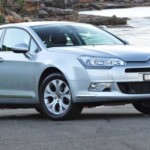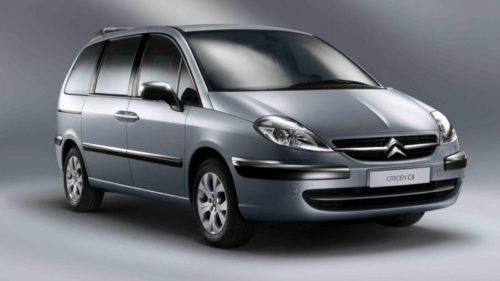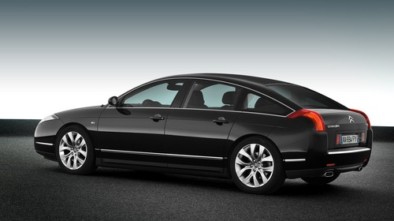Citroen Traction Avant - Car history
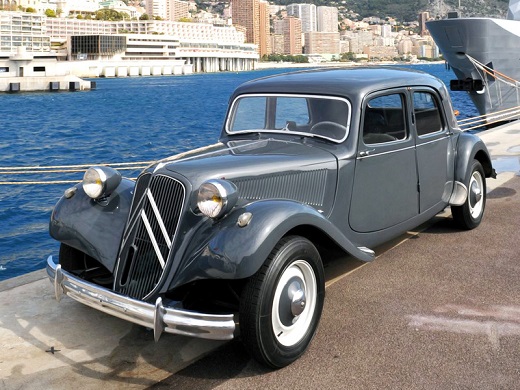
Citroën Traction Avant
The epithets most commonly associated with the name Citroen they were acquired a long time ago, and in order to preserve and convey these same terms and features, much more than extravagant body shapes were required.
Specifically, it required diversity, technical perfection, a vision for the constructor and a distinct and unique Gallic spirit. All these features have for decades adorned the famous French company Citroen. One might think otherwise, but the factory life of these specifics has never been easy, on the contrary. Always on the verge of being profitable and on the verge of understanding the audience, but always with great and unrivaled cars and always with a lot of soul and charm. This tradition can be observed from the very beginning (immediately after the First World War), as well as in the years that followed. Still, if we wanted to showcase the true Citroen spirit of yesteryear, the best illustration would certainly be the Traction Avant. This car, with top-of-the-line technical solutions of the time and extremely harmonious and decent design, represents Citroen at its best as well as France 1930s. It all began in 1933 when Citroen began to give in to the market.
The solution, of course, was a brand new model, which would interest customers both in technical solutions and in design. Although engineers and designers struggled to imagine the best concept for a new car, Andre Citroen (owner and founder) was simply not happy with the designs and drawings that stood on his desk. Deciding to take a more active approach to construction, he came up with the idea of a front traction, almost unimaginable and unknown at the time. Ordering the designers an immediate start on the new model, the future Traction Avant is conceived. The famous names who worked on this project were also a guarantee of success. In particular, the celebrated engineer Andre Lefebvre was in charge of the technique while the famous Flaminio Bertoni (without anything to do with the Italian house Bertone) created a recognizable and elegant shape to this day. Soon, the first prototypes go for testing, and the original idea of using an automatic transmission is abandoned due to unreliability and the classic three-speed manual transmission is adopted.
Just over a year after the start of development, on March 3, 1934, the new Citroen, model 7 CV Traction Avant, was introduced to the public. Initially, two versions were offered, the Berlin (four-door, so-called "small" body, 4.4 meters in length) and the Cabriolet (two-door), which was built on the same basis. Below the hood, which opened symmetrically on either side, was a longitudinally mounted four-cylinder engine, 1.3 liter displacement and 32 hp. Power was transmitted to a gearbox that was mounted in front of the engine and powered the front wheels. In addition to this, most importantly, the new Traction Avant was full of technical innovations, such as the uni bodywork and hydraulic brakes, and thanks to the elimination of cardan and differentials, the interior was devoid of transmission tunnels, allowing room for up to six people and a low profile . The audience immediately embraced the new car, with specialist circles calling it a herald of new fashion in construction, which was indeed true, given the impact the Traction Avant has.
Initial doubts about the reliability of the drive were soon eliminated, and Citroen rightly deserved a place in history, though not as the first manufacturer to introduce front traction, but as the first to make it a success and the first to popularize it. At the end of 1934, almost six months after its premiere, Citroen introduced a version with a stronger engine and a significantly larger body. Specifically, after complaints of low power and cramped space, the response came in the form of a "Normal" variant with a 12 cm wide and 20 cm longer body and a 1.6-liter unit with a power output of 36 hp, which slightly increased performance. In 1935, two new variants appeared, the Familiare and the Conditure Interieure. Both had an extension body and a third side window, and the Familiare and a third row of seats, so these models could seat as many as nine passengers. Unfortunately, that year, Andre Citroen dies, missing to fully see the success of his latest model, and his death has hit the factory very hard. However, three years later, development continues and a version called the Citroen 15/6 Traction Avante is introduced, which had luxurious equipment and a larger six-cylinder engine up to 2.9 liters and 77 hp.
Thanks to all the qualities as well as the high luxury and speed, this variant was called "Reine de la Rute", which is translated as "Queen of the Roads", which is what it was. In addition to this version, a "Comerciale" appeared, which was a semi truck. In addition, the buyers were offered a 1.9 liter unit with 46 hp. With the occupation of France (1940) by the outbreak of World War II, the Citroen plant closes for civilian production and the new Traction Avatne is malfunctioning while existing resources are being used to repair and process some specimens. Yet, in such a dark period, Traciton Avant had a prominent role in the fight against fascism. Because of their great stability, speed and space, the Tractions were a favorite of the Resistance cars that used them for nightly action in darkened Paris, without fear that Gestapo agents in Mercedes V 170s might arrive. After liberation, production resumed in 1946, but rather slowly. Problems with raw materials, they limit the offer to three versions of the sedan (smaller, "normal" and "familiare"), and the beautiful convertible is eliminated from the offer.
Big problems forced Citroen to offer its customers black body color, and when buying a new car, even the tires were considered accessories and extra. This situation prevailed until 1952, and the offer remained unchanged. However, in those years Citroen slowly began to neglect Traction Avant. With the success of the 2CV (Spacek) model and the new car project, the old Traction was no longer needed. In 1955, after the dramatic presentation of the DS 19 Shark model, it was clear to everyone that Traction Avant's place was in the history of motoring, and that other models were taking over the market. In the shadow of the advent of the DS 19, production of the Traction Avant goes out on June 25, 1957 without much of the noise and publicity that this car definitely deserved. After even 23 years in production (from 1934 to 1957, with interruption during the war), this legendary and highly influential model was produced in 759 units, including the production of factories in Belgium and the United Kingdom.
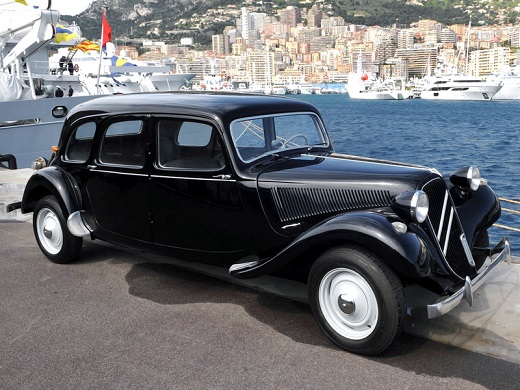
Today, Traction Avant is a very common and popular oldtimer. From this distance, we can say that this car has received the recognition it deserves, with its appearance set the standards of all the latter models in the class, and the technical "lay out" that was introduced in the 1930s and is still current today. Thanks to the large number of specimens made, parts and complete vehicles are not so rare, and knowing the quality and durability, Tractions are still often encountered in France, which are still in daily use! Their prices are not great except for rare convertibles, and a solid standard model can be bought for around € 15000. With us, Traction Avant was a popular and driven model, several restored specimens can be seen assembled, and the legend of a convertible in the north of Vojvodina has been circulating for a long time.
Author: 426 Hemi
Pictures: Citroen
Source: www.brzabrzina.com
Recommendation of similar texts:

Hi there, I am Mladen and I am an auto enthusiast. I started this blog years ago to help like minded people share information about latest cars, car servicing ideas, used car info, exotic cars, and auto technology. You will find helpful articles and videos on a wide variety of cars - Audi, Mercedes, Toyota, Porsche, Volvo, BMW and much more. Ping us if you have anything cool to share on latest cars or on how to make older cars more efficient, or just want to say hi!



